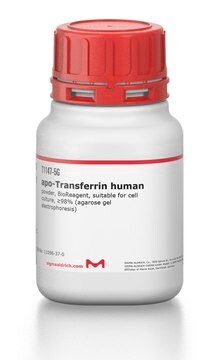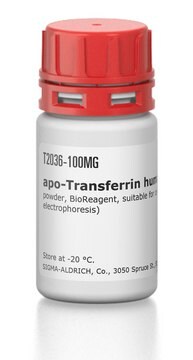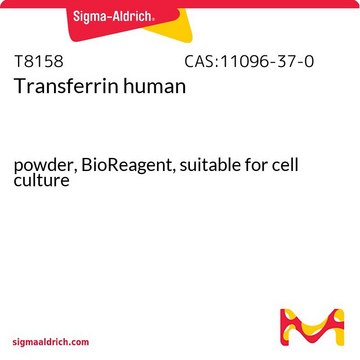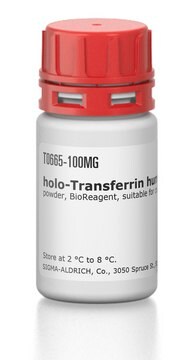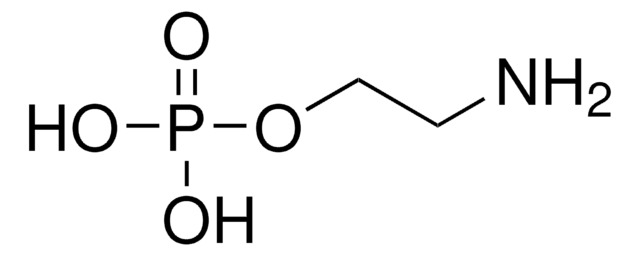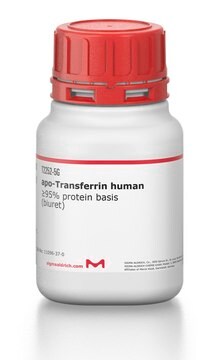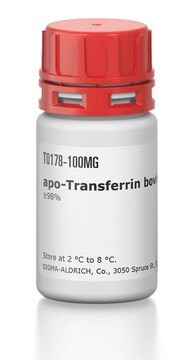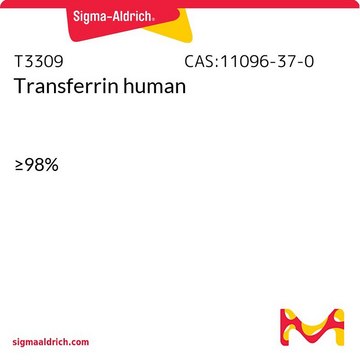T5391
apo-Transferrin human
γ-irradiated, powder, BioXtra, suitable for cell culture, ≥98%
Synonym(s):
Human transferrin, Siderophilin
Select a Size
Select a Size
About This Item
Recommended Products
Quality Level
sterility
γ-irradiated
product line
BioXtra
Assay
≥98%
form
powder
mol wt
76-81 kDa
concentration
~25 mM
technique(s)
cell culture | mammalian: suitable
impurities
HIV and HBsAg, source material tested negative
iron, essentially free
solubility
H2O: 50 mg/mL
Looking for similar products? Visit Product Comparison Guide
General description
Application
Biochem/physiol Actions
Other Notes
Disclaimer
Storage Class Code
11 - Combustible Solids
WGK
WGK 3
Certificates of Analysis (COA)
Search for Certificates of Analysis (COA) by entering the products Lot/Batch Number. Lot and Batch Numbers can be found on a product’s label following the words ‘Lot’ or ‘Batch’.
Need A Sample COA?
This is a sample Certificate of Analysis (COA) and may not represent a recently manufactured lot of this specific product.
Already Own This Product?
Find documentation for the products that you have recently purchased in the Document Library.
Customers Also Viewed
Articles
How transferrin and other cell culture components affect the performance of serum-free, protein-free cell culture systems used for biomanufacturing heterologous proteins including monoclonal antibodies. The page introduces the in vitro chemistry and biochemistry of transferrin.
Our team of scientists has experience in all areas of research including Life Science, Material Science, Chemical Synthesis, Chromatography, Analytical and many others.
Contact Technical Service